|
 |
|
 |
|
"Cayman Kai
Vacations" chosen best Privately Owned Properties |
|
"NEW"
Translate any page on this web site with Microsoft
Translator at the bottom of each page.
|
- "85
Degrees"
- Average
Temperature
- "82
Degrees"
- Average
Water Temperature
- "7"
- Average
number of spectacular sunsets at Rum Point Beach in a
week
-
Cayman Kai Vacations is


|
"Click on area of interest
below"




.htm_cmp_rmnsque100_vbtn.gif)


















































.htm_cmp_rmnsque100_vbtn.gif)















| |
"Cayman Kai Vacations"
|
-
Specializing in offering the
- Island Houses
of Cayman Kai
-
Vacation Rentals, Rental Management, & Investment Properties
- in the Cayman Kai/Rum
Point Grand Cayman, Cayman Islands
|
-
Specializing in offering
- Villa's,
Condominiums
-
Vacation Rentals, Rental Management & Investment Properties
- in
the Cayman Kai/Rum Point & North Side area Grand Cayman, Cayman
Islands
|
- click on to print page

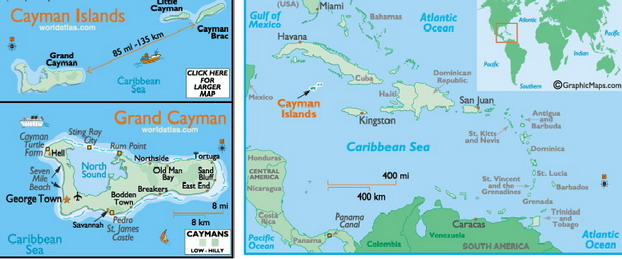 |
-
It’s the closest you’ll
ever come to taking your vacation for a
test drive.
-
-
With the power of Google
Earth you can explore the three islands,
Grand Cayman, Cayman Brac and Little
Cayman and the Cayman Kai area from
home. Fly from any area, zooming in
tight or pulling back for a wider view.
With satellite imagery, it's almost like
being here in person, view beautiful
beaches, attractions and dive sites.
Start exploring. It’s easy. Please
 to
your computer. It’s completely free. to
your computer. It’s completely free.
-
Now you’re ready to immerse yourself in the Cayman
Islands—Google Earth Style.
-
-
Once you have Google Earth installed on your
computer just click on the links below
-
and you should receive a pop up that a web site want
to
-
"Open",
"Save", or Save As"
Click on "Open" and Google Earth will open
automatically and the map will be loaded.
From your aerial view, you’ll notice place marks
throughout the islands. To learn more, click on the
different icons
that
represent beaches, attractions, and dive sites, and
you’ll get interesting facts and photos that give
you a taste of the experience.
If you would like to save to your
computer for future viewing just click on "Save As"
and reminder where you save it.
Click here to
"Open"
to view now or "Save As"
to your computer for future viewing the
Cayman Islands"
-
Check here to
-
"Open" to view
now or "Save As"
-
to your computer
for future
viewing the
|
|
Often described as "the islands that time forgot", the Cayman
Islands are an idyllic setting for a relaxing vacation. If you are looking for glittering nightlife, casinos and
white water rapids type excitement, this is
"not" the place.
The Cayman Islands
are made up of three lush islands, Grand Cayman, Cayman Brac and Little
Cayman; all surrounded by some of the bluest water in the world. Part of
the British West Indies, the Cayman Islands are nestled approximately
200 miles south of Cuba. There is plenty of snorkeling, diving, sailing
and boating to be done on all three of the islands.
The Cayman Islands are probably
best known for being one of the world's top dive sites. Many tourists
come down solely to explore the vast underwater life. So, if you're a
diver, you're in for a real treat, and if not, we will have you diving
in no time.
The Cayman
Islands are a British Colony with a Governor appointed by the British
Government. The capital is George Town. George Town is the "center" of
activity on the islands. Duty-free shops, tourists, restaurants and
off-shore banking are all abundant in George Town. |
|
|
- The total landmass of the three
Cayman Islands is 100 square miles
- Grand Cayman occupies 76 miles;
22 miles long by 8 mile wide: highest point 60'
- Cayman Brac occupies 14 square
miles; 12 miles long by just over one mile wide
- Little Cayman, 10 square miles.
 The
Cayman Islands were discovered on May 10th, 1503 by Christopher
Columbus on his fourth and last voyage to the new world. He was
actually on his way from Panama to Hispaniola when his ships
were steered off course by strong winds and he sighted Cayman
Brac and Little Cayman. The story says that he reported sighting
two small islands so full of tortoises (turtles) that they
looked like rocks and he gave the islands the name Las Tortugas
(The Turtles). The
Cayman Islands were discovered on May 10th, 1503 by Christopher
Columbus on his fourth and last voyage to the new world. He was
actually on his way from Panama to Hispaniola when his ships
were steered off course by strong winds and he sighted Cayman
Brac and Little Cayman. The story says that he reported sighting
two small islands so full of tortoises (turtles) that they
looked like rocks and he gave the islands the name Las Tortugas
(The Turtles).
Over the next 150 years
the islands went through several name changes and played host to
various visiting ships as sailors would use the islands to
replenish their supplies of fresh water, as well as stocking up
on turtle meat and various wild fowls. One of the name changes,
Caymans, is believed to have reflected the presence of
crocodiles and was derived from the Carib word for the crocodile
family. Indeed, several visiting buccaneers including Sir
Francis Drake and William Dampier noted "large lizards" and
crocodiles on these islands during the 1500's to 1700's.
In 1655, the islands came
under British control when Jamaica was captured from the Spanish
by Oliver Cromwell's army. They officially became a British
territory when the Treaty of Madrid was signed in 1670 and Spain
gave to Britain, "all those lands, islands, colonies and places
whatsoever situated in the West Indies".
Records show Cayman Brac
and Little Cayman being settled before Grand Cayman, but these
settlements did not last long as the settlers often fell prey to
Spanish pirates and they were finally recalled. This was all
between 1655 and 1671, during which time it is reported that Sir
Henry Morgan also paid visits to these islands. Pirates
continued to sail the Caribbean under permission from their
countries and were know as privateers. Their mission was to
plunder enemy ships and return seized wealth to their country.
Privatizing officially
came to an end with the Treaty of Utrecht (1713-1714). As a
result of this treaty, France and Spain ceased hostilities
towards other European countries, including Britain, and the
islands are then reported to have become hideouts for these
out-of-work pirates. With the islands now safe from attack,
settlers returned and records show permanent settlers in 1734
when land was granted to several families. The descendants of
some of those settlers reside here still.
One of the most told
stories in the islands history is the story of "The Wreck of the
Ten Sails". Legend says that one night in November, 1788, the "Cordelia",
the lead ship of a convoy of merchant ships bound from Jamaica
to Britain ran aground on the reef at East End. A signal was
given off to warn off the other ships, but was misunderstood as
a call to follow closer and nine more ships sailed onto the
reef. The people of East End are reported to have shown great
heroism in ensuring that no lives were lost and legend further
states that one of the lives saved was one of royalty. For this,
King George III is said to have granted the islands freedom from
conscription, while another report claims that freedom from
taxation was bestowed on the people of the islands as a reward.
Actual records do not support this story entirely.
There are records of a
census taken in the islands in 1802 showing 933 persons of which
545 were slaves and slavery was a part of life until 1833 when
the British parliament passed a law freeing slaves in British
colonies after a five to seven year apprenticeship. In 1835, the
emancipation of slavery meant an outright end of slavery except
for registered slaves under the apprenticeship scheme. No Cayman
slaves were actually registered because the nearest registration
office was in Jamaica, and this caused slave owners to petition
the British government for compensation.
In 1832, the islands'
first representative government system was formed with the
introduction of the Legislative Assembly. It consisted of eight
Justices of the Peace appointed by the Governor of Jamaica. The
islands were formally annexed to Jamaica in 1863 and this later
led to improved mail service to the islands via Jamaica as many
schooners now traveled between the two islands. Jamaica finally
appointed a Commissioner in the Cayman Islands to oversee the
affairs of the country as it was becoming difficult to do from
Jamaica. Under these first Commissioners the islands began to
develop, with schools, a bank, a small hospital, and a public
works program which began construction of roads and an office
for the Commissioner.
Long known for their
mastering of the seas as fishermen and turtlers, in the early
1900's many Caymanian men took to the seas as sailors aboard
merchant ships which sailed the Caribbean, to North America and
Central America. The tradition continued until well into the
century and Cayman sailors sailed to many countries including
Japan, Saudi Arabia and Venezuela. Many of these seamen became
captains and chief engineers on ships, but the tradition has
dwindled and today's generation stays closer to home.
Probably the most
memorable event in the history of the Cayman Islands was the
devastating hurricane of 1932. It hit Grand Cayman on 7th
November with winds estimated at 150 mph and a storm surge of
about 30 feet, then passed over Cayman Brac a day later with
winds of 200 mph and a storm surge of 32 feet. The islands were
completely devastated and Cayman Brac was hit the hardest with
69 lives lost compared to only 1 lost on Grand Cayman. Many
homes were washed out to sea and most lives were lost to
drowning. Some people escaped death by climbing trees to escape
the water and stories abound of heroic rescues. It took many
years for the islands to recover and many of the older residents
can still remember vividly the events of the storm.
In 1959, the Cayman
Islands got their first constitution and it provided for 12
elected members, along with two or three nominated members and
two or three official members. There was also an Executive
Council comprised of two elected members, one nominated member,
and two official members. The Commissioner was replaced by an
Administrator who presided over the Legislature and Executive
Council and he would consult with the Executive Council when
exercising his powers. He was not bound to take advice from them
and could act on his own in the best interest of the country.
In 1962, Jamaica became
independent and the Cayman Islands opted to remain under British
rule. This meant separating from Jamaica, and the power of the
Governor of Jamaica over these islands was transferred to the
local Administrator. This title was changed to Governor in 1971,
and in 1972 a new constitution was adopted. It provided for a
legislature of 12 elected members with no nominated members and
three official members appointed by the Governor. They would be
the Chief Secretary, the Financial Secretary, and the Attorney
General. The Executive Council would consist of four elected
members and three official members and each member of the
Executive Council would have a portfolio of responsibilities.
In 1991, there were calls
to revise the present constitution. Increased population and
development meant that more elected representatives were needed
and responsibilities needed to be re-shuffled. The main changes
were the provisions for 15 elected members to the Legislature,
and the addition of one member to Executive Council. Members who
were elected to Executive Council would now be known as
Ministers, and their immediate assistants would now be known as
Permanent Secretaries, replacing the name Principal Secretaries.
The changes were officially adopted in 1993.
We hope that you have
found this brief tour of our island's history informative and
interesting and please note that more detailed reading is
available by contacting various bookstores on the islands.
|
Geography &
Geology |
|
|
The
Cayman Islands are three islands, Grand Cayman, Cayman
Brac and Little Cayman,
located in the Caribbean Sea. With a latitude
between 19 degrees 15 minutes and 19 degrees 45 minutes
North, and a longitude between 79 degrees 44 minutes and
81 degrees 27 minutes West, they are well within the
tropical zone.
Grand Cayman is
about 150 miles south of Cuba and 180 miles west of
Jamaica. The three islands are outcrops of the Cayman
Ridge, a range of submarine mountains extending west
southwest from the Sierra Maestra range in the southeast
portion of Cuba to the Misteriosa Bank in the direction
of Belize.
The Cayman Trough
lies between the Cayman Islands and Jamaica. It is the
deepest part of the Caribbean, being over four miles
deep. South, towards the Gulf of Honduras, is the
Barlett Deep. These deep areas of ocean are in close
proximity to the three islands. This, combined with the
fact that Grand Cayman and Little Cayman are almost
surrounded by living coral reefs, provide the Cayman
Islands with some of the most popular dive sites in the
world. However, there is no possibility of a fishing
industry because apart from the Cayman Bank, a five-mile
by half-a-mile area some ten miles west of Grand Cayman
which lies at 15 to 20 fathoms, there is no continental
shelf.
The total area of
the three islands is about 100 square miles. Grand
Cayman is about 76 square miles, Cayman Brac, 14 square
miles and Little Cayman, 10 square miles.
Grand Cayman is
approximately 22 miles long and 8 miles at the widest
point wide. The highest elevation is about 60 feet above
sea level and the most striking topographical feature is
the North Sound, a shallow reef protected lagoon with an
area of about 35 square miles.
Cayman Brac lies
about 90 miles east northeast of Grand Cayman. It is
about 12 miles long and a little over a mile wide. The
Bluff is the Brac's most outstanding feature, rising
along the length of the island and reaching a height of
140 feet at the eastern end then falling in a shear
cliff to the sea.
Little Cayman is
five miles west of Cayman Brac and is ten miles long and
two miles at its widest point. It is the flattest of the
three islands with its highest elevation being 40 feet.
To the west, a seven mile channel separates Cayman Brac
from Little Cayman.
The three islands
are formed of two distinct formations of calcareous
rock. The older limestone, called bluff limestone, was
formed in the Oligocene-Miocene period, about 30 million
years ago. This limestone forms the central core of each
island. It is a dense Karst limestone. Surrounding this
bluff limestone core is a coastal limestone terrace
called "ironshore". Ironshore is a formation of
consolidated coral, mollusk shells and marl with some
limestone. It was formed about 120,000 years ago in the
Pleistocene period.
The Pleistocene
period was marked by a series of ice ages. After the
last ice age, the sea level began to rise slowly from a
level about 400 feet below present sea level.
All the islands
lack rivers or streams because of the porous nature of
the rock and the absence of hills or valleys. The lack
of water and sediment runoff into the sea gives the
islands the amazing clarity of water around them. In the
rock are many cracks and fissures. Soil is found mainly
in pockets, though there is arable land, noticeably on
top of the Bluff on Cayman Brac.

National Symbols
The Cayman Parrot
|
About 2,000 parrots inhabit Grand Cayman, while
the quieter, smaller Cayman Brac Parrot
maintains a stable population of about 400.
Nesting in tree holes in old-growth forests, the
colourful parrots depend on undisturbed
woodlands and black mangrove forests for
survival. The Cayman Islands parrots are two
sub-species of the Cuban Parrot (Amazona
Leucocephala). Cayman's parrots have
iridescent green feathers with darker edges over
the body, a white eye ring, red cheeks, black
ear patches and brilliant blue wing feathers
which are only obvious when the bird is in
flight. The tail has blue outer edges, with some
red and yellowish-green underneath. The Grand
Cayman Parrot (Amazona leucocephala caymanensis) also has a pink flush to its
whitish forehead. The Cayman Brac Parrot (Amazona
leucocephala hesterna) is slightly smaller,
with more black trim on its green feathers. The
crown is pure white, and there is a large maroon
area on the abdomen. It is now found only on
Cayman Brac. Although it used to inhabit Little
Cayman, it was apparently wiped out from there
by the 1932 hurricane. Historically parrots were
common family pets. Today, however, it is
illegal to take a parrot from the wild and keep
it as a pet. |
|
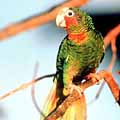 |
|
Silver Thatch Palm
The tall, slender silver thatch palm is
especially conspicuous at the eastern end of all
three of the Cayman Islands, where they sway in
the trade winds high above the low, dry thickets
of native trees and shrubs. Bearing the
scientific name, Coccothrinax proctorii,
after botanist Dr. George Proctor, its leaves
are what give this tree its common name; they're
green on the top and silver on the bottom.
Up to the early 1960s, the silver thatch palm
played an important role in the lives of
Caymanians. Unusually tough, the leaves have a
variety of uses, from roofing for houses to the
weaving of hats, baskets and fans. In earlier
years, straw rope made from the thatch palm was
highly prized in Cuba and Jamaica for use in
shipping, fishing and sugar industries.
Exporting rope was Cayman's largest source of
revenue. |
|
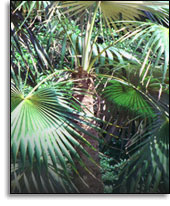 |
|
The Wild Banana Orchid
The woods provide
shelter for several varieties of flowering
plants, including orchids. Probably the best
known of Cayman's 26 species of orchids is the
wild banana orchid, of which there are two
varieties: Schomburgkia thomsoniana var.
thomsoniana, which originated on Grand
Cayman, and Schomburgkia thomsoniana var.
minor, which came from Cayman Brac and
Little Cayman.
Both varieties have scented flowers with purple
lips, although the petals are predominantly
white on the Grand Cayman variety, while the
Sister Islands' has slightly smaller flowers,
with pale yellow petals. The flowers appear at
the top of a long curved spike at the bottom of
which cluster banana-like pseudo-bulbs that give
this orchid its name. |
|
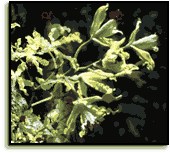 |
|
Coat of Arms
The Cayman Islands coat of arms consists of a
shield, a crested helm and the motto. Three
green stars representing the Islands are set in
the lower two-thirds of the shield. The stars
rest on blue and white wavy bands representing
the sea. In the top third of the shield, against
a red background, is a gold lion "passant
guardant" (walking with the further forepaw
raised and the body seen from the side),
representing Great Britain. Above the shield is
a green turtle on a coil of rope. Behind the
turtle is a gold pineapple. The turtle
represents Cayman's seafaring history; the rope,
its traditional thatch-rope industry; and the
pineapple, its ties with Jamaica.
The Islands' motto, He hath founded it upon
the seas, is printed at the bottom of the
shield. This verse from Psalms 24 acknowledges
Cayman's Christian heritage.
The proposal for a coat of arms was approved by
the Legislative Assembly in 1957, and public
input was sought on its design. The Royal
Warrant assigning "Armorial Ensigns for the
Cayman Islands" was approved by Her Majesty's
command on 14 May 1958. |
|
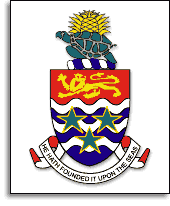 |
|
Written permission from the Chief Secretary's office is
required for any non-governmental use of the Coat of
Arms. More information on using national symbols is
available on the Portfolio of Internal and External
Affairs web site.
Flag
|
The flag of the
Cayman Islands was adopted in 1959. Prior to
that, the Islands had used the British flag for
all official occasions. Set on a navy blue
field, the flag features the red, white and blue
British Union Jack in its upper left-hand
corner, and the Cayman coat of arms encircled in
a pure white ground in the right-hand centre of
the field. The maritime flag features a red
field.
Information on flag protocol is available on the
Portfolio of Internal and External Affairs web
site. |
|
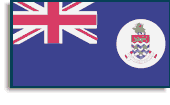 |
|
National Song
Cayman's national song, Beloved Isle Cayman,
was written by the late Mrs. Leila Ross Shier in
1930. Regarded as the unofficial national song
for many years, it became the official national
song when the Cayman Islands Coat of Arms, Flag
and National Song Law was passed in 1993.
As a British Overseas Territory, the national
anthem is God Save the Queen.
Beloved Isle
Cayman
As composed by Leila
Ross-Shier, June, 1930
1)O
land of soft, fresh breezes, Of verdant trees so
fair
With the Creator's glory reflected ev'rywhere.
O sea of palest em'rald, Merging to darkest
blue,
When 'ere my thoughts fly Godward, I always
think of you.
(Chorus)
Dear, verdant island,
set In blue Caribbean sea,
I'm coming, coming very soon, O beauteous isle,
to thee.
Although I've wandered far, my heart enshrines
thee yet.
Homeland! Fair Cayman Isle I cannot thee forget
2)Away
from noise of cities, their fret and carking
care,
With moonbeams' soft caresses, unchecked by
garnish glare,
Thy fruit and rarest juices, abundant, rich and
free,
When sweet church bells are chiming, my fond
heart yearns for thee.
(Chorus)
3)When
tired of all excitement, and glam'ours worldly
care,
How sweet thy shores to reach, and find a
welcome there,
And when comes on the season, of peace, good
will to man,
'Tis then I love thee best of all, beloved Isle,
Cayman!
(Chorus) |
|
|
|
National Heroes
|
In 1993, the
Legislative Assembly passed the National Heroes
Law, providing for the declaration of persons
who have rendered exceptional service, as
national heroes. The first national hero, the
late Executive Council member, Hon. James (Jim)
Manoah Bodden, was named in 1994. In 1996, the
second hero, Mrs. Sybil Ione McLaughlin, first
Speaker of the Legislative Assembly, was named.
|
|
|
|
|
|


Owen Roberts
International Airport (GCM)
Grand Cayman
Time & Temperature
Current Actual Satellite Weather Map
Visit of our Weather page
Climate
![[Weather]](weather.jpg)
The Cayman Islands is in the
northeast trade wind belt of the Caribbean and enjoys a stable climate.
Cool winter nights and hot summer days are the year-round norm,
influenced only occasionally by winter storms known as Nor'westers, or,
a tropical storm or hurricane threat every few years. Summer humidity
can be uncomfortable, but the cool sea breezes at night usually bring
relief.
Rainfall
Rainfall is seasonal, from May to
November, with May/June and September/October typically being the
wettest months. The driest months are usually February and March.
Rainfall is generally the result either tropical thunderstorms which
develop in the summer months, or, localized rain resulting from the
evaporation of water in the central mangroves of the main island.
"Tropical Waves" drift through the Caribbean in the summer months, often
depositing large amounts of rainfall before they dissipate. On occasion
they organize to form tropical storms or even hurricanes. Localized
rainfall usually results when the summer heat causes evaporation of
water in the central mangrove wetlands and rain clouds are formed. These
clouds generally drift to the west, depositing rain on the western side
of the island. The wettest day on record is November 30, 1993 with 7.8
inches. Although unconfirmed, it is said that a hurricane in 1909 dumped
an estimated 12 inches of rain in a 24 hour period.
Temperatures
January and February are the
coolest months with daytime high's in the upper 70's to low 80's and
nighttime low's in the mid 60's to low 70's. Summer temperatures peak in
July and August with daytime highs in the upper 80's to low 90's and
nighttime low's in the low 80's. High humidity in the summer months can
often make the days and nights feel hotter. On January 19th, 2000, we
registered a low temperature of 58°F, with no wind.
Winter Storms
Occasional "Cold Fronts" pass
through the islands in the winter months, the remnants of more intense
winter weather moving south through the southeast US and northwest
Caribbean. If strong enough, the resulting local winter storms known as
Nor'westers may be accompanied by extremely rough seas which can cause
coastline damage and beach erosion.
Hurricanes
The Cayman Islands has had many
encounters with devastating hurricanes over the past two centuries of
recorded history. Although the hurricane season runs from June 1st to
November 30th, the months of September, October and November are
typically the most active for our area, the southwest Caribbean. This is
the period when storms tend to form in the southern Caribbean and move
north, into or close to our area. Visitors to the islands need not worry
about being trapped during a hurricane as evacuation plans are in place
and have worked well in the past. The last hurricanes to directly impact
the Cayman Islands were Gilbert in September of 1988, Mitch in October
of 1998, Michelle in November of 2001 and the worst of all Ivan on
September 12, 2004.
Tides
Grand Cayman's tide table is based
on that of Galveston, Texas, minus 8 hours 1 minute. Spring tides range
from 10 to 12 inches and autumn/fall tides from 15 to 20 inches.
Time Zone
The islands remain on Eastern Standard Time but without changing to
Daylight Saving Time in the summer.
Money Matters
The local currency, the Cayman Islands dollar, is equivalent to US
$1.25. American currency is generally accepted as are major credit
cards. Banking hours are 9 am to 2:30 pm Monday through Thursday, and 9
am to 1 pm, and 2 pm to 4:30 pm on Friday. The departure tax when
leaving Cayman is US $12.50.
Entering The Country
Proof of citizenship and a photo ID are required for U.S. and Canadian
visitors: a passport, driver's license, birth certificate together with
a return ticket. Passports and return tickets are required for all other
visitors.
Accommodations
Visitors have the choice between international luxury hotels and
million-dollar condominiums to comfortable guest houses and dive
resorts.
Water sports
Cayman is regarded as a world-class SCUBA diving destination. Wall,
wreck, reef and the famous Stingray City diving excursions are conducted
daily by over 30 professional diving organizations. Sport fishing is also
big in Cayman and the annual Million Dollar Month tournament continues
to gain popularity among international anglers. Other water sports
include snorkeling, parasailing, board sailing, and skiing.
Land sports
Golfers can take a swing at the Jack Nicklaus golf course, drive at the
18-hole Championship Links at Safe Haven, or take in some tennis, squash,
or other outdoor sports. Visitors are welcome at the local gyms.
Medical Facilities
The George Town Hospital in Grand Cayman and Faith Hospital in Cayman
Brac are equipped to deal with most emergencies. Emergency airlifts to
Miami can be arranged very quickly if necessary.
Transportation
Major car rental agencies and excellent local ones provide cars, jeeps,
and buses. A valid driver's license from your country of origin would be
needed to obtain a visitor's driving permit. Ground tour operators and
taxis will also take you around on island tours if you prefer not to
drive. Also available for rent are bicycles, scooters, and motorbikes.
Taxi Rates
Rates are one way and based on up to four passengers per taxi, and two
pieces of luggage per person. Extra luggage costs US $1.20 or CI $1.00.
Duty Free Shopping
-
Visit our Shopping page
A number of shops offer the world's best perfumes, watches, jewelry,
crystal, and china at duty free prices.
Marriage Requirements
-
Visit our Wedding & Honeymoon page
You can get married in Cayman in 24 hours. Documents required from both
partners are proof of identity, your Cayman Islands
embarkation/disembarkation card, certified or original copies of divorce
decrees/death certificates.
Religion & Churches
Cayman is, mainly, a Christian community with churches representing
various denominations including the Roman Catholics, Anglicans, Seventh
Day Adventists, Presbyterians. Visitors are always welcome at services.
Festivals & Carnivals
-
Visit our Festivals page
The Pirates Week Festival held in October celebrates the island's
swashbuckling history and is the largest annual festival. The Batabano
Carnival is held in spring and has a more Caribbean flavor with
costumed bands taking to the streets to the sound of steel pan music. The
Queen's Birthday Parade in June is an event of pomp and underlines
Cayman's close ties with the British Crown.
Nightlife
Several nightclubs cater to American and Caribbean musical tastes. There
are two comedy clubs, two local theatres that regularly stage dramatic
performances, and a cinema that presents current movies.
Dress
Dress is casual and public nudity, including topless sunbathing, is
strictly prohibited. A beach cover-up shirt, or dress is required when
you leave the beach. For nighttime dining, casual elegance - something
more than T-shirt and shorts - are preferred.
Pet Regulations
A current official health certificate for your pet plus a completed
application form for the importation of dogs and cats to the Cayman
Islands are needed to obtain an Import Permit.

|
Need more
information or have questions
We would be happy to answer any questions you may have
about our condominium or the island. So, please don't
hesitate to ask. |
 |
caymankaivacations@msn.com |
 |
- Robert Wagner
- Phone Number (412) 828-2111
- Fax: (412) 828-2115
|
Cayman Kai Vacations
Specializing in offering
Villa's & Condominiums
Vacation Rentals in the Cayman Kai/Rum Point
and North Side area, Grand Cayman, Cayman Islands
Click on to return
Caribbean Vacation Grand Cayman Villa's and Condominiums
Rentals, Cayman Kai, Rum Point, Grand Cayman, Cayman
Islands
|
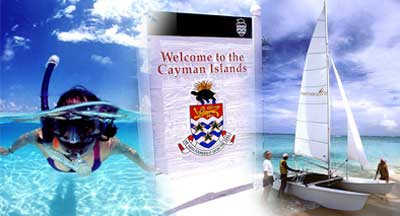


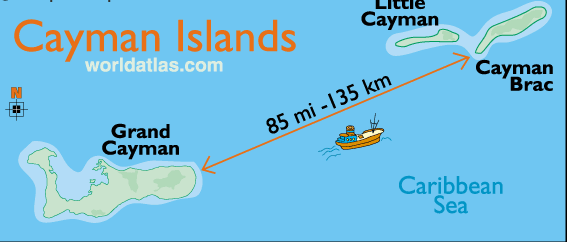

![[Weather]](weather.jpg)











.htm_cmp_rmnsque100_vbtn.gif)


















































.htm_cmp_rmnsque100_vbtn.gif)















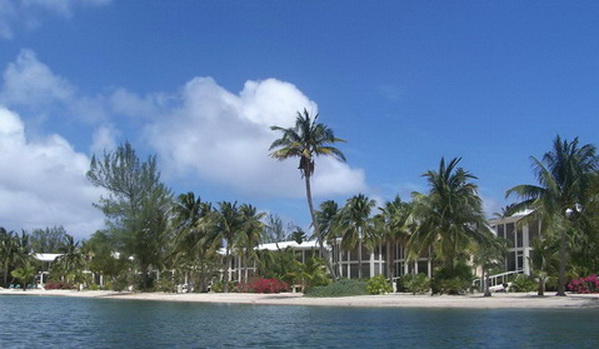
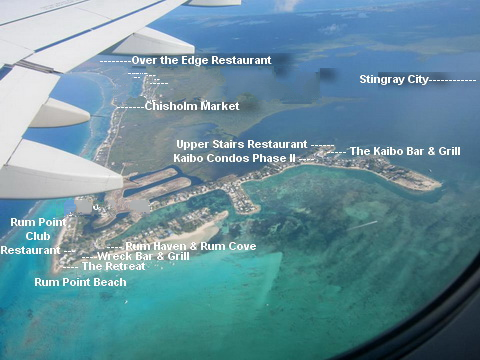



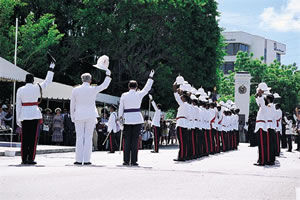

 The
Cayman Islands were discovered on May 10th, 1503 by Christopher
Columbus on his fourth and last voyage to the new world. He was
actually on his way from Panama to Hispaniola when his ships
were steered off course by strong winds and he sighted Cayman
Brac and Little Cayman. The story says that he reported sighting
two small islands so full of tortoises (turtles) that they
looked like rocks and he gave the islands the name Las Tortugas
(The Turtles).
The
Cayman Islands were discovered on May 10th, 1503 by Christopher
Columbus on his fourth and last voyage to the new world. He was
actually on his way from Panama to Hispaniola when his ships
were steered off course by strong winds and he sighted Cayman
Brac and Little Cayman. The story says that he reported sighting
two small islands so full of tortoises (turtles) that they
looked like rocks and he gave the islands the name Las Tortugas
(The Turtles).
